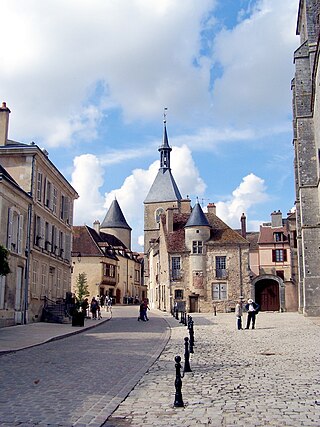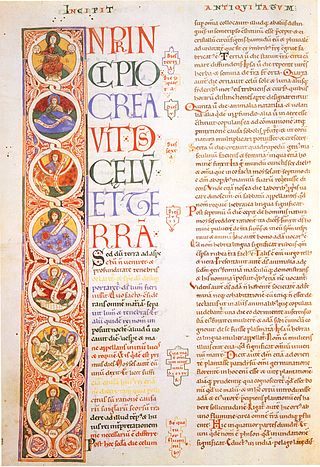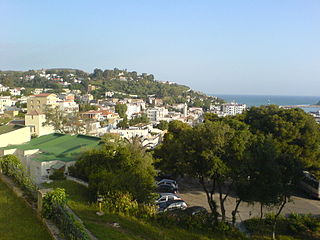Related Research Articles
In Greek mythology, Aeolus or Aiolos is a name shared by three mythical characters. These three personages are often difficult to tell apart, and even the ancient mythographers appear to have been perplexed about which Aeolus was which. Diodorus Siculus made an attempt to define each of these three, and his opinion is followed here.

Demosthenes was a Greek statesman and orator in ancient Athens. His orations constitute a significant expression of contemporary Athenian intellectual prowess and provide insight into the politics and culture of ancient Greece during the 4th century BC. Demosthenes learned rhetoric by studying the speeches of previous great orators. He delivered his first judicial speeches at the age of 20, in which he successfully argued that he should gain from his guardians what was left of his inheritance. For a time, Demosthenes made his living as a professional speechwriter (logographer) and a lawyer, writing speeches for use in private legal suits.
In Greek mythology, Chrysothemis or Khrysothemis is a name ascribed to several characters.

An antiquarian or antiquary is an aficionado or student of antiquities or things of the past. More specifically, the term is used for those who study history with particular attention to ancient artifacts, archaeological and historic sites, or historic archives and manuscripts. The essence of antiquarianism is a focus on the empirical evidence of the past, and is perhaps best encapsulated in the motto adopted by the 18th-century antiquary Sir Richard Colt Hoare, "We speak from facts, not theory."
The question of whether Jesus historically existed is part of the study undertaken in the quest for the historical Jesus and the scholarly reconstructions of his life. Virtually all scholars of antiquity accept that Jesus was a historical figure and dismiss denials of his existence as a fringe theory, while many details like his alleged miracles and theological significance are subject to debate.
Beli Mawr was an ancestor figure in Middle Welsh literature and genealogies. He is the father of Cassivellaunus, Arianrhod, Lludd Llaw Eraint, Llefelys, and Afallach. In certain medieval genealogies he is listed as the son or husband of Anna, cousin of Mary, mother of Jesus. According to the Welsh Triads, Beli and Dôn were the parents of Arianrhod, but the mother of Beli's other children—and the father of Dôn's other children—is not mentioned in the medieval Welsh literature. Several royal lines in medieval Wales traced their ancestry to Beli. The Mabinogi names Penarddun as a daughter of Beli Mawr, but the genealogy is confused; it is possible she was meant to be his sister rather than daughter.

The Epic Cycle was a collection of Ancient Greek epic poems, composed in dactylic hexameter and related to the story of the Trojan War, including the Cypria, the Aethiopis, the so-called Little Iliad, the Iliupersis, the Nostoi, and the Telegony. Scholars sometimes include the two Homeric epics, the Iliad and the Odyssey, among the poems of the Epic Cycle, but the term is more often used to specify the non-Homeric poems as distinct from the Homeric ones.

Flora is a Roman goddess of flowers and of the season of spring – a symbol for nature and flowers. While she was otherwise a relatively minor figure in Roman mythology, being one among several fertility goddesses, her association with the spring gave her particular importance at the coming of springtime, as did her role as goddess of youth. She was one of the fifteen deities who had their own flamen, the Floralis, one of the flamines minores. Her Greek counterpart is Chloris.

Harpalus is a young lunar impact crater that lies on the Mare Frigoris, at the eastern edge of the Sinus Roris. To the southeast at the edge of the mare is the small crater Foucault, and to the northwest on the opposite edge is the walled plain named South.

Avallon is a commune in the Yonne department in Bourgogne-Franche-Comté in central-eastern France.

Bouguer is a lunar impact crater that lies along the southern edge of the Mare Frigoris, to the north of the crater Bianchini. To the west-southwest of Bouguer, along the same shore of the mare, is the crater Foucault. Nearly due west is the more prominent Harpalus, and to the west is La Condamine.

Antiquities of the Jews is a 20-volume historiographical work, written in Greek, by historian Flavius Josephus in the 13th year of the reign of Roman emperor Flavius Domitian which was around CE 93 or 94. Antiquities of the Jews contains an account of the history of the Jewish people for Josephus' gentile patrons. In the first ten volumes, Josephus follows the events of the Hebrew Bible beginning with the creation of Adam and Eve.

Sir William Smith was an English lexicographer. He became known for his advances in the teaching of Greek and Latin in schools.

Foucault is a small lunar impact crater that lies along the southern edge of Mare Frigoris, to the southeast of the crater Harpalus. In the rugged terrain to the south of Foucault is Sharp. The outer perimeter of Foucault forms a somewhat irregular circle, with slight outward bulges to the south and northeast. The inner wall of the rim is not notably terraced, and slopes down directly to the uneven floor. It is named after physicist Léon Foucault, most famous for the Foucault pendulum.

Tabarka is a coastal town located in north-western Tunisia, close to the border with Algeria. Tabarka's history is a mosaic of Berber, Punic, Hellenistic, Roman, Arabic, Genoese and Turkish culture. The town is dominated by an offshore rock on which there remains a Genoese castle. Nationalist leader Habib Bourguiba, later president of post-independence Tunisia, was exiled on Tabarka by the French colonial authorities in 1952. Tourist attractions include coral fishing, the Coralis Festival of underwater photography, and its annual jazz festival.

Cleostratus was an astronomer of ancient Greece. He was a native of Tenedos. He is believed by ancient historians to have introduced the zodiac and the solar calendar. According to J. Webb, Cleostratus took his ideas from the Babylonians.
This article is about the particular significance of the year 1789 to Wales and its people.

Pederasty or paederasty is a sexual relationship between an adult man and a boy. The term pederasty is primarily used to refer to historical practices of certain cultures, particularly ancient Greece and ancient Rome.
Harpalus or Harpalos is a name reported by modern historical books as the engineer who built the pontoon bridge over the Hellespont for Xerxes in 480 BC. The primary source Herodotus (7.34-36) gives no specific name, except the following information:
the Phoenicians made a bridge of flaxen cables, and the Egyptians a papyrus one - a great storm swept them down - Xerxes, angry, commanded that the sea receive the punishment of whipping and that the overseers of the bridge be beheaded - and new engineers he set about making the bridges.

The Scottish Renaissance humanist George Buchanan gave a long list of Scottish Kings in his history of Scotland—published in Latin as Rerum Scoticarum Historia in 1582—most of whom are now considered by historians to be figures of legend, or completely misrepresented. The list went back around 1900 years from his time, and began with Fergus I. James VI of Scotland, who was Buchanan's pupil, adopted the story of Fergus I as his ancestor, and the antiquity of the line was emphasised by the House of Stuart.
References
- Historical, genealogical, and classical dictionary By Historical, genealogical and classical dictionary Harpalus (1743)
- The Origin of the History of Science in Classical Antiquity (Peripatoi 19) (Hardcover) by Leonid Zhmud page 270 ISBN 3-11-017966-0 (2006)
- Handbuch der Altertumswissenschaft: calendars and years in classical antiquity By Walter Otto, Iwan von Müller, Hermann Bengtson, Alan E. Samuel Page 39 ISBN 978-3-406-03348-3 (1972)
- Footnotes
- ↑ According to Hugh Pembroke Vowles. See Harpalus (engineer) for context.
- ↑ "Harpalus". The Moon. Retrieved Nov 20, 2019.
- ↑ "Harpalus crater". The Planetary Society. Retrieved Nov 20, 2019.